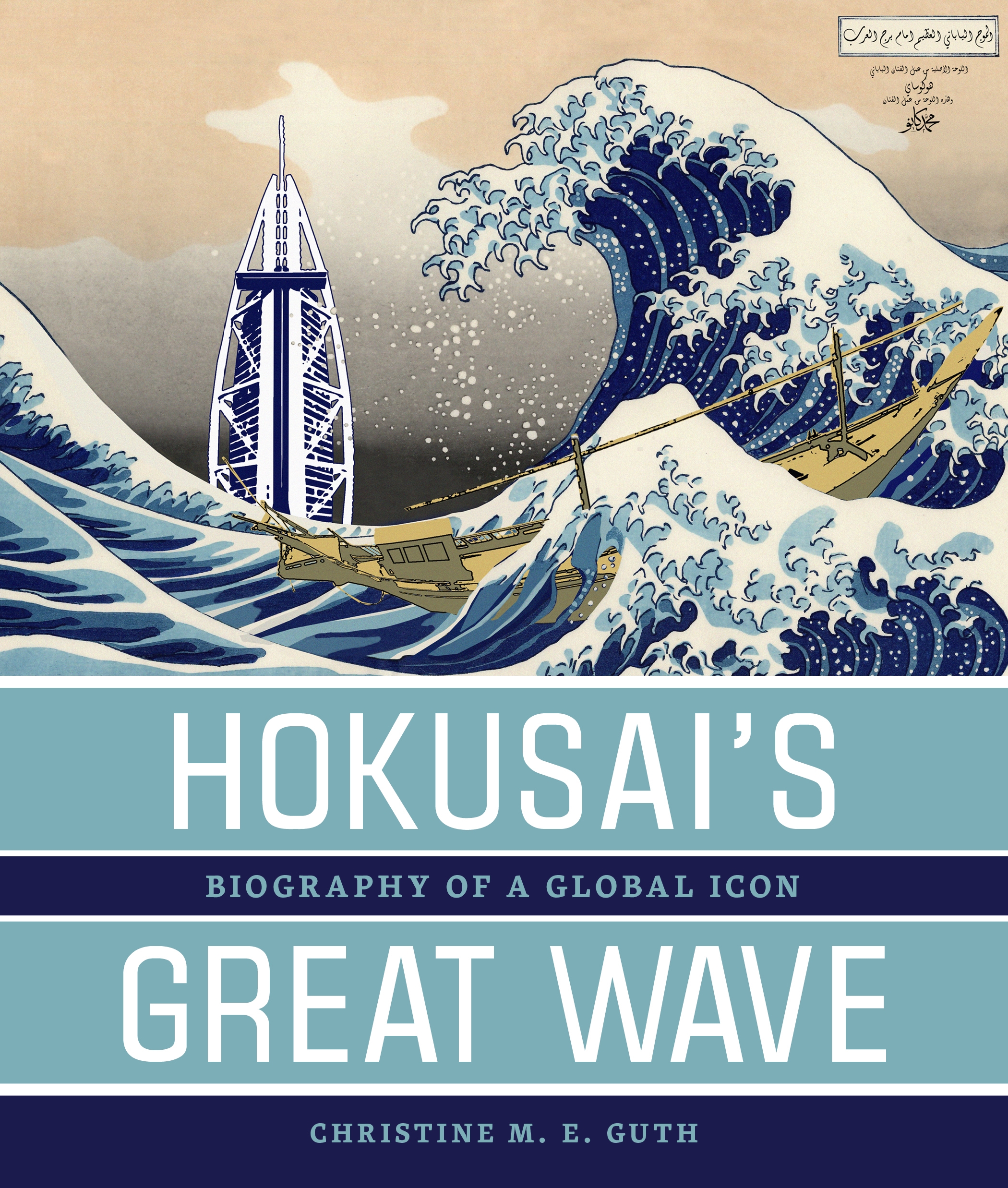Hokusai’s Great Wave: Biography of a Global Icon
Additional Information
- About the Book
-
Hokusai’s “Great Wave,” as it is commonly known today, is arguably one of Japan’s most successful exports, its commanding cresting profile instantly recognizable no matter how different its representations in media and style. In this richly illustrated and highly original study, Christine Guth examines the iconic wave from its first publication in 1831 through the remarkable range of its articulations, arguing that it has been a site where the tensions, contradictions, and, especially, the productive creativities of the local and the global have been negotiated and expressed. She follows the wave’s trajectory across geographies, linking its movements with larger political, economic, technological, and sociocultural developments. Adopting a case study approach, Guth explores issues that map the social life of the iconic wave across time and place, from the initial reception of the woodblock print in Japan, to the image’s adaptations as part of “international nationalism,” its place in American perceptions of Japan, its commercial adoption for lifestyle branding, and finally to its identification as a tsunami, bringing not culture but disaster in its wake.
Wide ranging in scope yet grounded in close readings of disparate iterations of the wave, multidisciplinary and theoretically informed in its approach, Hokusai’s Great Wave will change both how we look at this global icon and the way we study the circulation of Japanese prints. This accessible and engagingly written work moves beyond the standard hagiographical approach to recognize, as categories of analysis, historical and geographic contingency as well as visual and technical brilliance. It is a book that will interest students of Japan and its culture and more generally those seeking fresh perspectives on the dynamics of cultural globalization.
- About the Author(s)
-
Christine M. E. Guth, Author
Christine M. E. Guth leads the Asian design and material culture specialism in the Royal College of Art and Victoria and Albert Museum postgraduate design history program.
- Reviews and Endorsements
-
Every so often a publication appears that is both inherently brilliant and destined to change the face of studies in a given field because of the depth of the analysis and the originality of the arguments posed. Such a book is Christine Guth’s detailed, imaginative, and fully original examination of one of Hokusai’s seminal woodblock prints Kanagawa
oki name ura (The Great Wave off Kanagawa). . . . The achievement of this book is that Guth has imaginatively shown a way to use the past to explore the present; art historical research and the new methods that Guth has used make this book a seminal study for all cultural historians now and in the future.
—Journal of Japonisme- Dr. Guth is a remarkable writer and researcher. Her many articles and books demonstrate clarity of discussion and depth of understanding; she always brings new ideas and insights to Japanese art history. . . . This book is well worth reading, for Asian art collectors and for students in courses about visual culture and social media.
—Journal of the Japanese Art Society of America - Guth brilliantly examines the mutating social life of Hokusai’s image, from its production in late-Edo Japan to its emergence as a French, Euro-American, and then global signifier of all things Japanese; from its work in Japanese nationalism to its play in circuits of commodity capitalism; from its status as a shorthand for international high art to its popular manifestation as a lifestyle brand (think surfing); and from its early conscription into classical Western aesthetics of the sublime to its increasing association with looming global environmental disaster.
—Environmental Humanities - Through a rigorous analysis of the reproductions and adaptations of Hokusai’s wave in the world, Guth examines the highly complicated process by which Hokusai’s motif crossed national and cultural borders and the boundaries of genres and media to become recognised as a global icon. . . . The book would be of great interest to scholars and students interested in Japanese studies, cultural studies and art history.
—Asian Studies Review - This book is not the easiest read, but your reviewer found the struggle worthwhile. In particular he welcomed the probing into the continued ‘orientalism’ in Western attitudes, however beneficent they seek to be.
—New Zealand Journal of Asian Studies - Hokusai’s Great Wave is surprisingly compact given the far-reaching content that it delivers. It is delightfully illustrated with many large reproductions, almost all in color. . . . Guth demonstrates her uncommon ability to illuminate a complex intercultural phenomenon through an accessibly written yet critical account that is grounded in the study of a single subject. Conceptually sophisticated and theoretically relevant, the book offers a satisfying read for all those in Japanese studies who seek to venture out into the new waters of global cultural studies.
—Pacific Affairs - Christine Guth’s book is a welcome addition to the corpus of books on Japanese art for a mixed readership. . . . the book provides a very valuable look into the dynamics of globalization of a non-Western artwork.
—East Asian Publishing and Society - This book, by one of the most important scholars of Japanese art in the English-speaking world, was enormously helpful in planning the upcoming exhibition [Hokusai: Inspiration and Influence, 26 March–16 July 2023]. It discusses in detail the background of Hokusai’s most famous work—the colour woodblock print Under the Wave off Kanagawa from the series Thirty-Six Views of Mount Fuji—and traces its resonance around the world right up to the present, with many new insights.
—Sarah E. Thompson, exhibition curator, Museum of Fine Arts (MFA) Boston
- Supporting Resources
-










